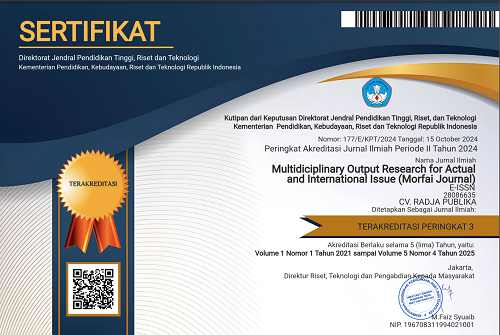COMPARATIVE ANALYSIS OF ADVANTAGES OF COFFEE FARMING WITH DIFFERENT CULTIVATION SYSTEMS AND PLANTING DISTANCES
Main Article Content
Suryadi
Fadli
Irada Sinta
Coffee plants in general are one of the plantation commodities that are suitable for smallholder plantations because they can produce fruit throughout the year. Coffee production can be used as a source of daily or weekly income for the community. The problem in the upstream subsystem is that the productivity of Indonesian coffee plants is still below its normal potential and tends to decrease. One of the reasons for this low productivity is the cultivation system, starting from maintenance, pruning and fertilizing, as well as plant spacing. The difference in treatment in the coffee cultivation system will also affect the profits that will be obtained by farmers. This study aims to analyze the differences in the profits of coffee farming with a spacing of 2.5 x 2.5 m with a spacing of 1.5 x 1.5 m and different cultivation systems. This research uses descriptive quantitative method using profit analysis and profit difference test. The results showed that the spacing of 1.5 x 1.5 m is more profitable than the spacing of 2.5 x 2.5 m. This happened because the population per hectare at a spacing of 1.5 x 1.5 m was 4,444 plants accompanied by very intensive care, while at a spacing of 2.5 x 2.5 m the population was only 1,600 plants. The follow-up to the results of this research will be submitted to the Sinta-2 journal by preparing articles according to the format given to the journal in question. This happened because the population per hectare at a spacing of 1.5 x 1.5 m was 4,444 plants accompanied by very intensive care, while at a spacing of 2.5 x 2.5 m the population was only 1,600 plants. The follow-up to the results of this research will be submitted to the Sinta-2 journal by preparing articles in accordance with the format given to the journal in question. This happened because the population per hectare at a spacing of 1.5 x 1.5 m was 4,444 plants accompanied by very intensive care, while at a spacing of 2.5 x 2.5 m the population was only 1,600 plants. The follow-up to the results of this research will be submitted to the Sinta-2 journal by preparing articles in accordance with the format given to the journal in question.
Central Bureau of Statistics. 2020. Statistics of Indonesian Coffee. Central Jakarta.
Daniel, M. 2015. Introduction to Agricultural Economics. Jakarta: Earth Literacy.
Fahruddin, H., Yulianti K., Sulaeman. 2019. Comparative Analysis of Side-Splitting and Top-Cut Cocoa Farming Income in the Village West Sidole, Ampibado District, Parigi Mautong Regency. Journal. Faculty of Agriculture. Tadulako University.
Hassan. 2012. Analysis of Research Data with Statistics. Jakarta: Graphics.
Misbahuddin, Iqbal. 2013. Research Data Analysis with Statistics. Jakarta: Earth Literacy.
Mustapa. 2013. Comparative Analysis of Oil Palm Farming Income for Iga and Plasma Groups in Gunung Sari Village, Pasangkayu District, North Mamuju Regency. Essay. Faculty of Agriculture. Tadulako University.
Nazir. 2005. Research Methods. Jakarta: Ghalia Indonesia.
Purnomo, A. 2011. The Concept of Income and Profit. Jakarta: Rineka Cipta.
Rahim and Hastuti. 2017. Agricultural Economics, Introduction to Theory and Cases. Self-Help Spreader.
Sinaga, R. 2019. Comparative Analysis of Profits from Semi-Organic and Non-Organic Arabica Coffee Farming in Raya District, Simalungun Regency. Journal. Faculty of Agriculture. Malikussaleh university.
Soekarno. 2011. Farming Analysis. Jakarta: University of Indonesia.
Sugiyono. 2014. Qualitative Quantitative Research Methods and R&D. Bandung: Alphabeta.
Sukirno, S. 2012. Introduction to Microeconomic Theory. Jakarta: PT. Salemba.
Suratiyah, K. 2012. Farming Science. Jakarta: Self-Help Spreader.









